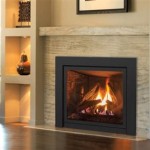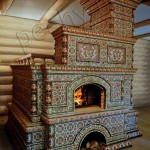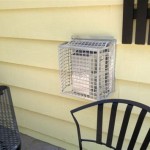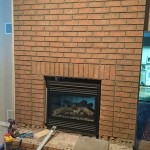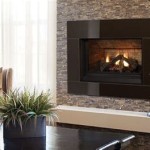Mission Style Fireplace Screen: A Study in Craftsmanship and Function
The Mission style, also known as Arts and Crafts style, emerged in the late 19th and early 20th centuries as a reaction against the mass-produced, heavily ornamented aesthetic of the Victorian era. It championed honest materials, simple forms, and meticulous craftsmanship. This philosophy is distinctly evident in Mission style fireplace screens, which are not merely functional barriers but also integral elements of a room's décor, reflecting a conscious effort to integrate art and everyday life.
Fireplace screens, in general, serve the crucial purpose of containing sparks and embers, preventing them from escaping the hearth and potentially causing fire hazards. They also protect children and pets from accidentally touching the hot glass or embers. Beyond this practicality, however, lies the design opportunity to enhance the visual appeal of the fireplace and the surrounding living space. Mission style fireplace screens accomplish this with their hallmark characteristics.
Mission style furniture and accessories are characterized by strong vertical lines, rectangular shapes, flat panels, and exposed joinery. The emphasis is on revealing the structure and the inherent beauty of the materials used, primarily oak, but also sometimes incorporating other hardwoods. Ornamentation is minimal, often consisting of geometric patterns or stylized natural motifs. The finishes applied are typically natural or stained to highlight the wood grain, often with a matte sheen.
The materials used in construction are paramount. Solid oak, known for its strength and durability, is the most common choice. The wood is typically quartersawn to maximize stability and showcase the medullary rays, which appear as distinctive "flake" patterns. Other hardwoods, such as mahogany or cherry, may be used for accents or inlays. The screen mesh itself is often made of woven steel or iron, providing an effective barrier against sparks while maintaining a certain transparency. Brass or copper accents may be incorporated for decorative purposes, often in the form of rivets or decorative panels.
The construction methods employed are equally important. Mortise-and-tenon joints, dovetail joints, and other traditional woodworking techniques are used to ensure strength and longevity. These joints are often left exposed, serving as both structural elements and decorative details. The attention to detail in the construction process is a hallmark of the Mission style, reflecting a commitment to quality and craftsmanship.
Key Point 1: Defining Characteristics of Mission Style Design
Understanding the core tenets of Mission style is essential to appreciating the design of its fireplace screens. Simplicity is paramount. The forms are predominantly rectilinear, avoiding curves and elaborate embellishments. The focus is on clean lines and geometric shapes, reflecting a sense of order and functionality. This stark simplicity contrasts sharply with the ornate designs of previous eras.
Honesty in materials and construction is another defining characteristic. The materials used are typically natural and unadorned, showcasing their inherent beauty. The construction methods are straightforward and visible, emphasizing the craftsmanship involved. There is a deliberate avoidance of artificial or deceptive elements.
Functionality is also a key consideration. Mission style pieces are designed to be practical and durable, serving their intended purpose effectively. The designs are often ergonomic, prioritizing comfort and ease of use. Form follows function is a guiding principle.
Minimal ornamentation is a deliberate design choice. While not entirely devoid of decoration, Mission style furniture and accessories feature minimal embellishment. Any ornamentation is typically geometric or stylized, reflecting natural motifs. The emphasis is on understated elegance rather than flamboyant displays.
Key Point 2: The Functional Aspects of a Fireplace Screen
The primary function of any fireplace screen, regardless of style, is safety. It must effectively contain sparks and embers, preventing them from escaping the hearth and potentially igniting flammable materials in the surrounding room. The screen mesh must be sufficiently fine to prevent even small embers from passing through. It also needs to be heat resistant to withstand the temperatures generated by a burning fire.
Beyond spark containment, a fireplace screen also provides a barrier that prevents accidental contact with the open flame or hot surfaces. This is particularly important in households with children or pets, where curiosity or impulsiveness could lead to burns or other injuries. A sturdy screen, properly positioned, can provide a significant layer of protection.
A well-designed fireplace screen can also improve efficiency of the fireplace. By slowing the rate of airflow into the chimney, the screen can help to regulate the draft, preventing excessive heat loss and reducing the risk of backdrafting. This can translate to a more comfortable and efficient heating experience.
Furthermore, fireplace screens can act as a visual barrier, obscuring the unsightly mess of ashes and logs when the fireplace is not in use. This can help to maintain a cleaner and more aesthetically pleasing appearance in the room. The screen effectively transforms the fireplace from a utilitarian heating appliance into a decorative focal point.
Key Point 3: The Aesthetic Contribution of a Mission Style Screen
A Mission style fireplace screen can significantly enhance the aesthetic of a room, particularly one decorated in a similar style. Its clean lines and simple forms complement the overall design aesthetic, creating a cohesive and harmonious look. The use of natural materials, such as oak, adds warmth and texture to the space, contributing to a sense of comfort and authenticity.
The screen can serve as a focal point, drawing the eye and creating a sense of visual interest. Its strong vertical lines can help to define the space and add a sense of height to the room. The minimalistic design ensures that it doesn't overwhelm the space, but rather complements and enhances the existing décor.
The exposed joinery, a hallmark of Mission style, can add a touch of artisanal charm to the fireplace surround. The careful craftsmanship and attention to detail are evident in the construction, reflecting a commitment to quality and artistry. These details elevate the screen from a purely functional object to a piece of art.
The finish of the wood, typically a natural stain or oil, highlights the grain and texture of the oak, adding depth and character. The matte sheen contributes to a sense of understated elegance, avoiding the glossy, over-the-top finishes of previous eras. The choice of finish is crucial to achieving the desired aesthetic effect.
The incorporation of geometric patterns or stylized natural motifs, such as leaves or flowers, can add a subtle touch of ornamentation without compromising the overall simplicity of the design. These details are typically executed in a restrained and understated manner, reflecting the Mission style's emphasis on elegance and refinement.
Ultimately, a Mission style fireplace screen is a carefully considered design element that combines functionality and aesthetics. It’s a testament to the enduring appeal of simple forms, honest materials, and meticulous craftsmanship, contributing to the overall beauty and harmony of the living space.
When selecting a Mission style fireplace screen, several factors should be considered. The size of the fireplace opening is critical to ensure proper coverage and spark containment. The style of the screen should complement the existing décor of the room. The quality of the materials and construction should be carefully examined to ensure durability and longevity. The finish of the wood should be consistent with other furniture and accessories in the room. The price point should be balanced against the quality and features of the screen.
Maintaining a Mission style fireplace screen is relatively simple. Regularly dusting or wiping the screen with a soft cloth will help to remove surface dirt and grime. Periodically applying a wood oil or polish can help to protect the finish and enhance the natural beauty of the wood. Any repairs to the screen mesh or frame should be addressed promptly to maintain its functionality and safety.
In conclusion, the Mission style fireplace screen represents a unique and enduring design aesthetic that seamlessly blends functionality and beauty. Its simple forms, honest materials, and meticulous craftsmanship make it a timeless addition to any home, reflecting a commitment to quality and artistry.

Pleasant Hearth Mission Style Fireplace Screen

Woodlink 15137 3 Panel Mission Style With Glass Insert Fireplace Screen At Sutherlands

Pleasant Hearth Mission Style 3 Panel Fireplace Screen Fa017sb The Home Depot

Pleasant Hearth Mission Style Fireplace Screen

Mission Style Batchelder Peacock Wrought Iron Fireplace Screen Bushere Son Studio Inc

Mission Stained Glass Fireplace Screen All Things

Pleasant Hearth 54 In Wenge Steel 3 Panel Craftsman Fireplace Screen The Screens Department At Com

Minuteman Mission Style Screen Black Doors Fireplace Hearth Stove Patio

Gothic Mission Style Bat Wrought Iron Fireplace Screen Bushere Son Studio Inc

Barton 4 Panel Wrought Iron Fireplace Screen Fire Spark Guard Hinged Doors With Tools 96323 The Home Depot
Related Posts


